Safety first? Etymotic MC3 and HD5 Headphone Review
Hi, Giktayms! Many have never even heard of a company like Etymotic, but ask any audiophile, and he will immediately tell you why they call her an American legend. Etymotic ER4 headphones, introduced in the early 90s, were the first to be equipped with a reinforcement radiator. At first it was strange why one of the leaders in the field of sound prostheses leaned into the headphones, but as soon as the first reviews about the ER4 channel appeared, everything fell into place and Etymotic rushed into this market not as a pioneer, but as an innovator.
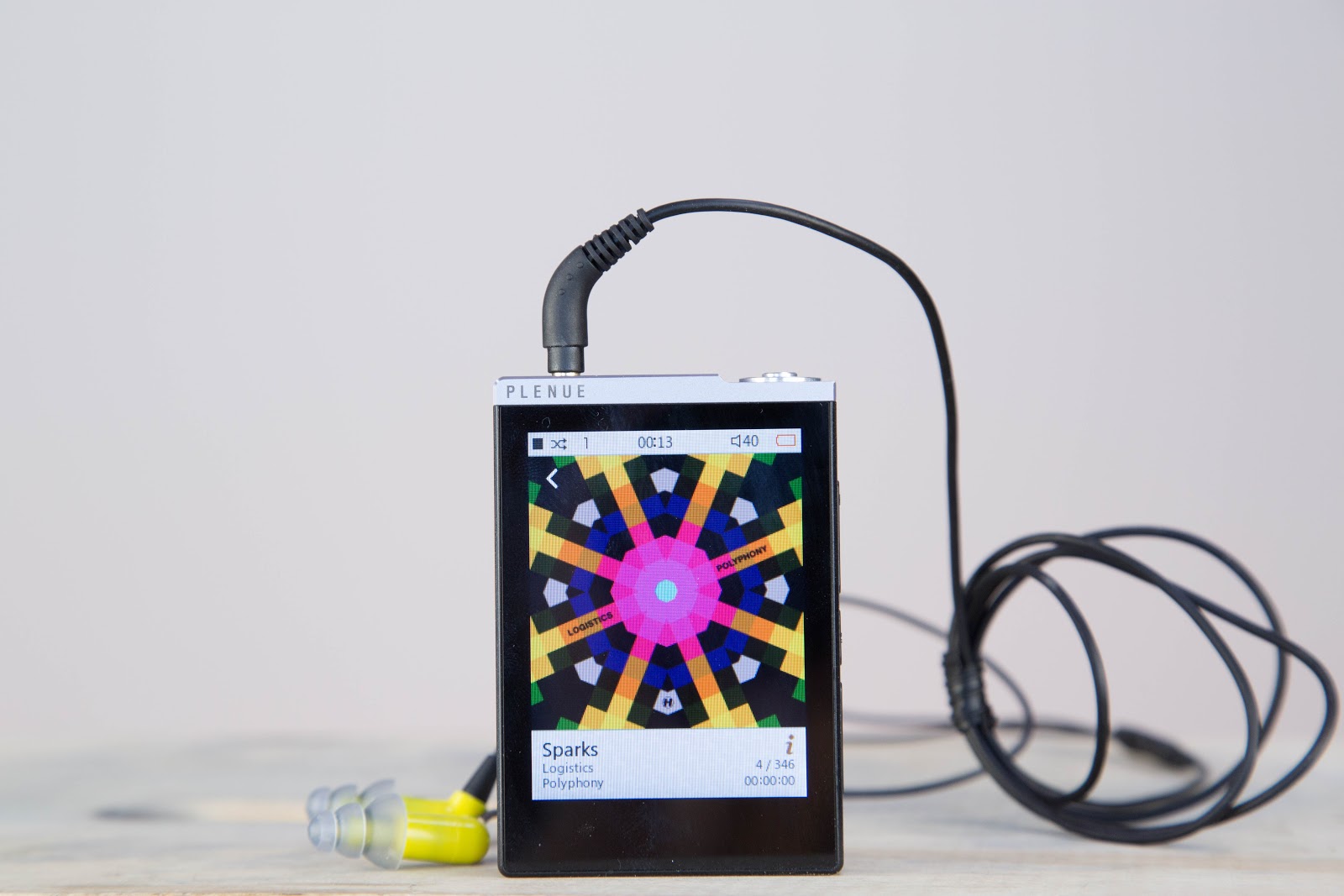
The manufacturer quickly realized that the public "wants more", and soon expanded the range of their headphones: ER4RB, ER4PT (modification ER4 for traveling) appeared, as well as ER4P with ER4S. The last two models have not just brought Etymotic popularity among regular users: ER4S are still considered to be one of the best in-ear rebar headphones in history. The feature of these headphones in almost linear frequency response, which the manufacturer was able to achieve with a single reinforcement radiator. Needless to say that sound lovers quickly turned the name Etymotic into a common noun. And if anatomically, the listener was ideally compatible with ER4S (the headphones were maximally revealed during the direct auditory canal), the familiar tracks never sounded any different to him.
Of course, in all this there is an exaggeration, and the fever around ER4 cannot be compared with gold, but few people have so far managed to repeat the success of the American manufacturer. Not so long ago, he released the reincarnation of his legendary model in the form of modifications NEW ER4 : ER4XR (Extended Response) and ER4SR (Studio Reference), which we described in great detail in the blog , both versions equipped with a reinforcing radiator with a balanced anchor and even have identical characteristics However, the sound is completely different. It may seem that Etymotic has found itself only in the “fixtures”, but this is not at all the case: the MC3 and HD5 headphones , which will be discussed today, clearly demonstrate this.
')
The MC3 is made in a slightly aggressive Etymotic style. On the front side of the white cardboard box, the headphones themselves are shown, and the necessary technical information is placed on the back. Opening the top cover, through the small window you can already look at the headphones.
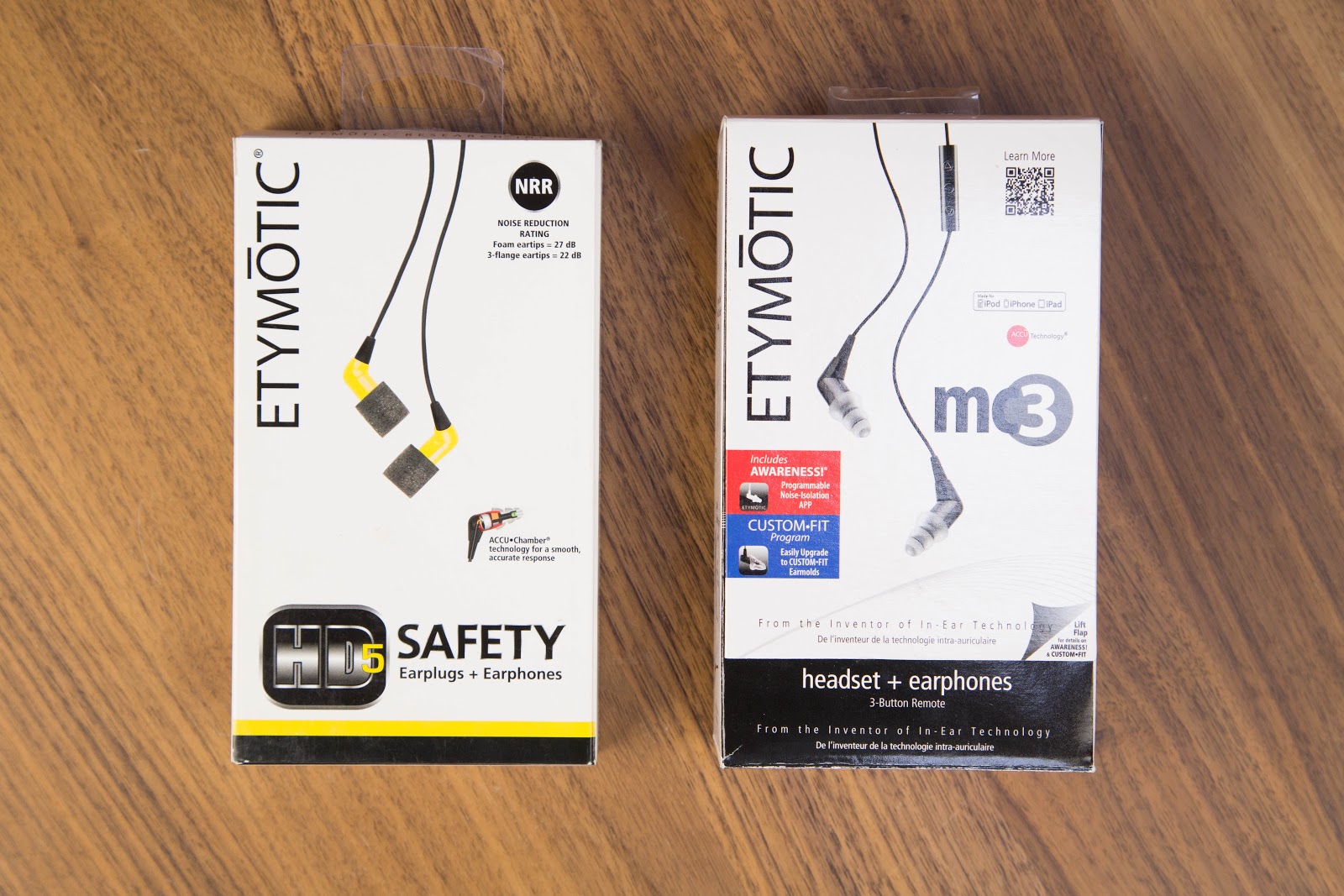
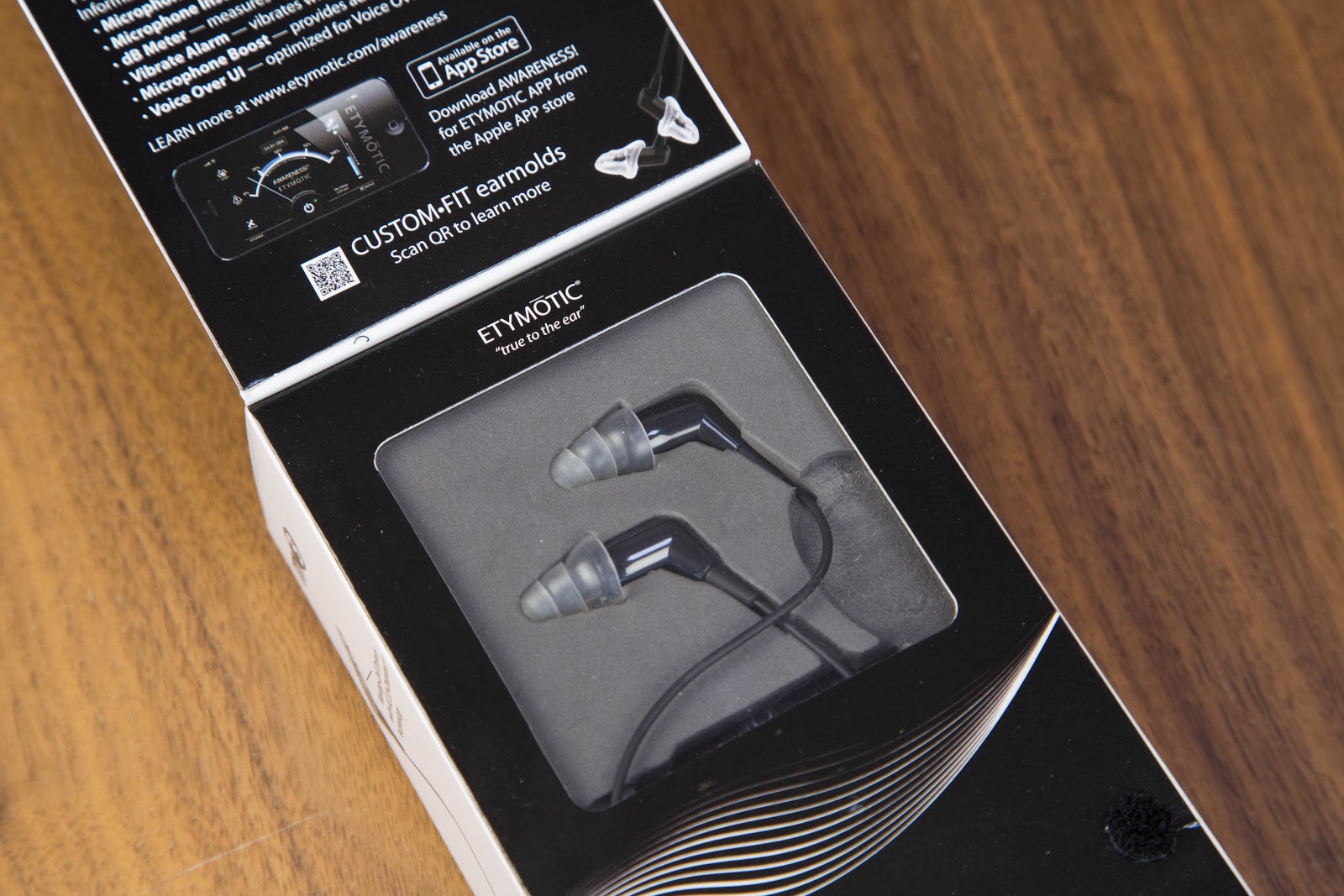
Boxing with HD5 looks like that of the MC3 : the same placement logic, hinged lid ... but under it there is no usual window showing the appearance of the headphones. Instead, reference information was placed on the spread, from which it follows that with three-flange ear cushions the noise absorption is 22 dB, and with foamy - 27 dB. According to the “passport”, the headphones “eat up” from 36-42 dB of superfluous noise without any active noise cancellation there. It is not for nothing that the HD5 manufacturer attributed to the Safety series: with such sound insulation, the risk of hearing damage while listening is minimal, since the headphones block external sounds in such a way that there is no need to increase the volume.
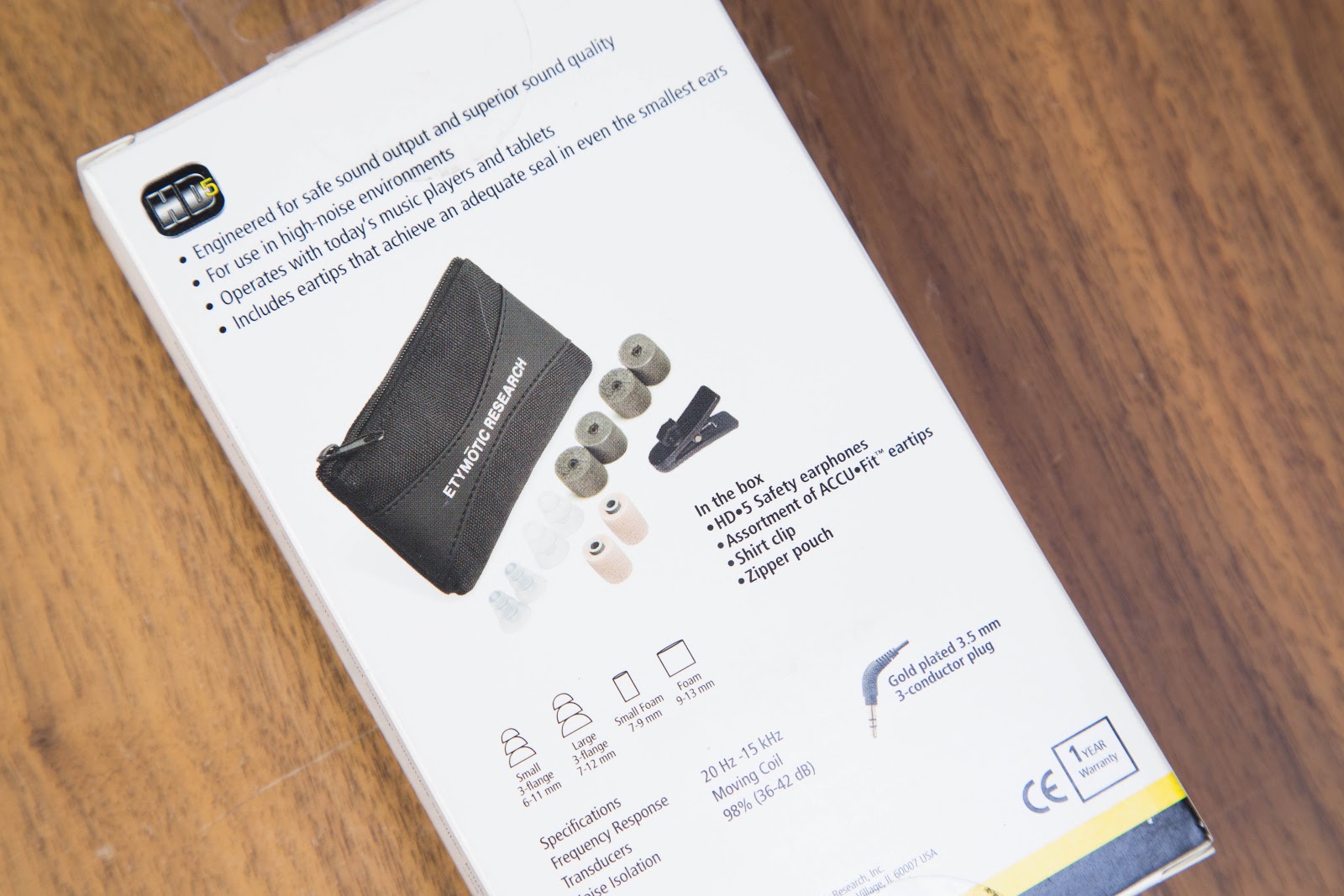
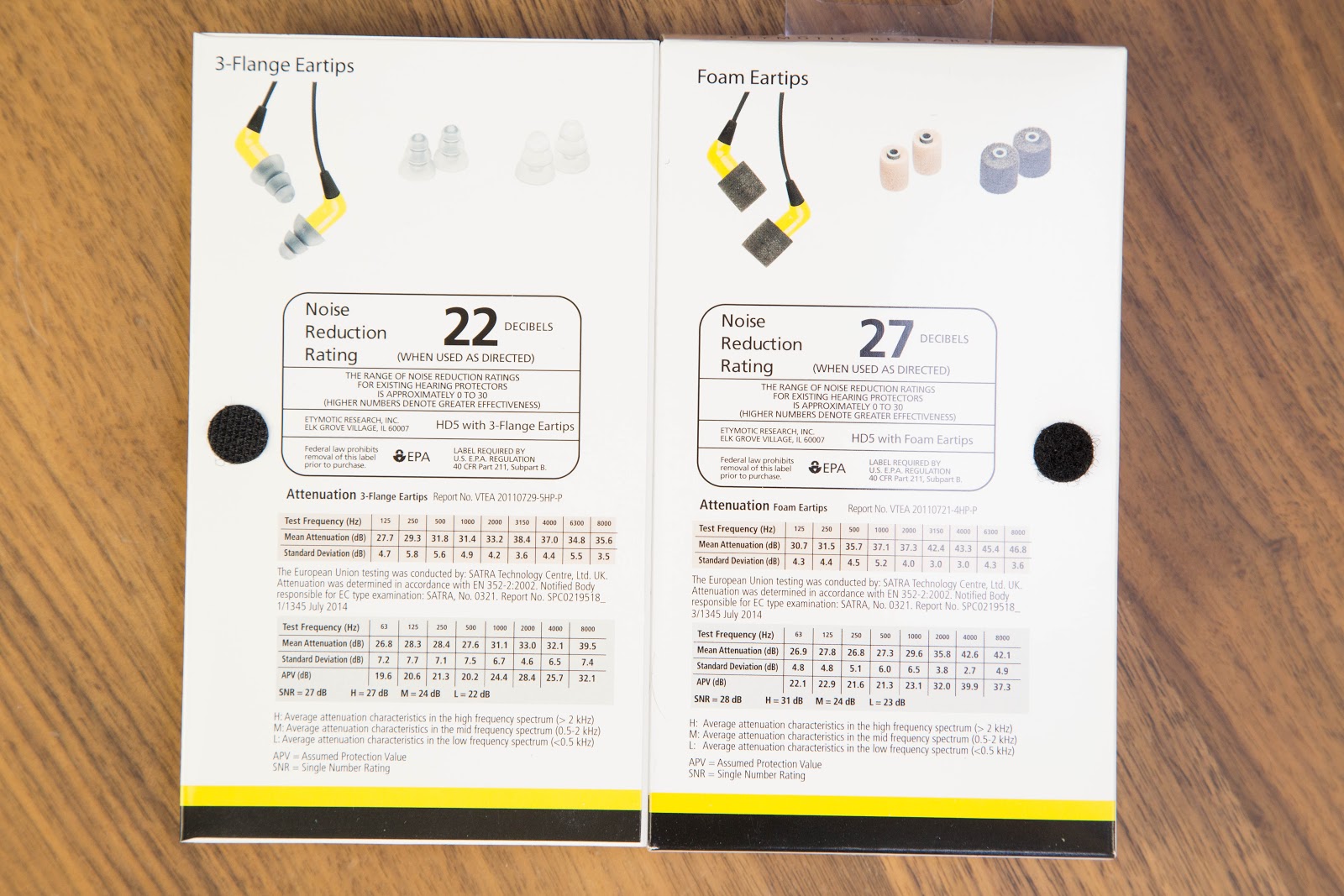
In the plastic case we find headphones and additional accessories. In MC3, a carrying case, a set of interchangeable ear cushions (three-flange and foam in two sizes), a plastic clip and, most importantly, two pairs of interchangeable acoustic filters with a tool for replacing them were put in the kit.

The HD5 package is similar to the MC3 with the exception of replaceable acoustic filters, but they put an extra pair of foam nozzles for improved noise insulation.

Already, by picking the headphones, it becomes clear what target audience they are intended for: if the MC3 has a pronounced “audiophile” directivity, then the HD5 focuses mainly on safety (300 ohms after all!), Without which children cannot do.
At first glance, both models are similar: in shape, the headphones resemble a small tube with ear pads - “Christmas trees” at the end, which were so loved by Etymotic. Nevertheless, there are plenty of differences: for example, in the case of the HD5, plastic is used as the case material, while in MC3 it is made of metal.
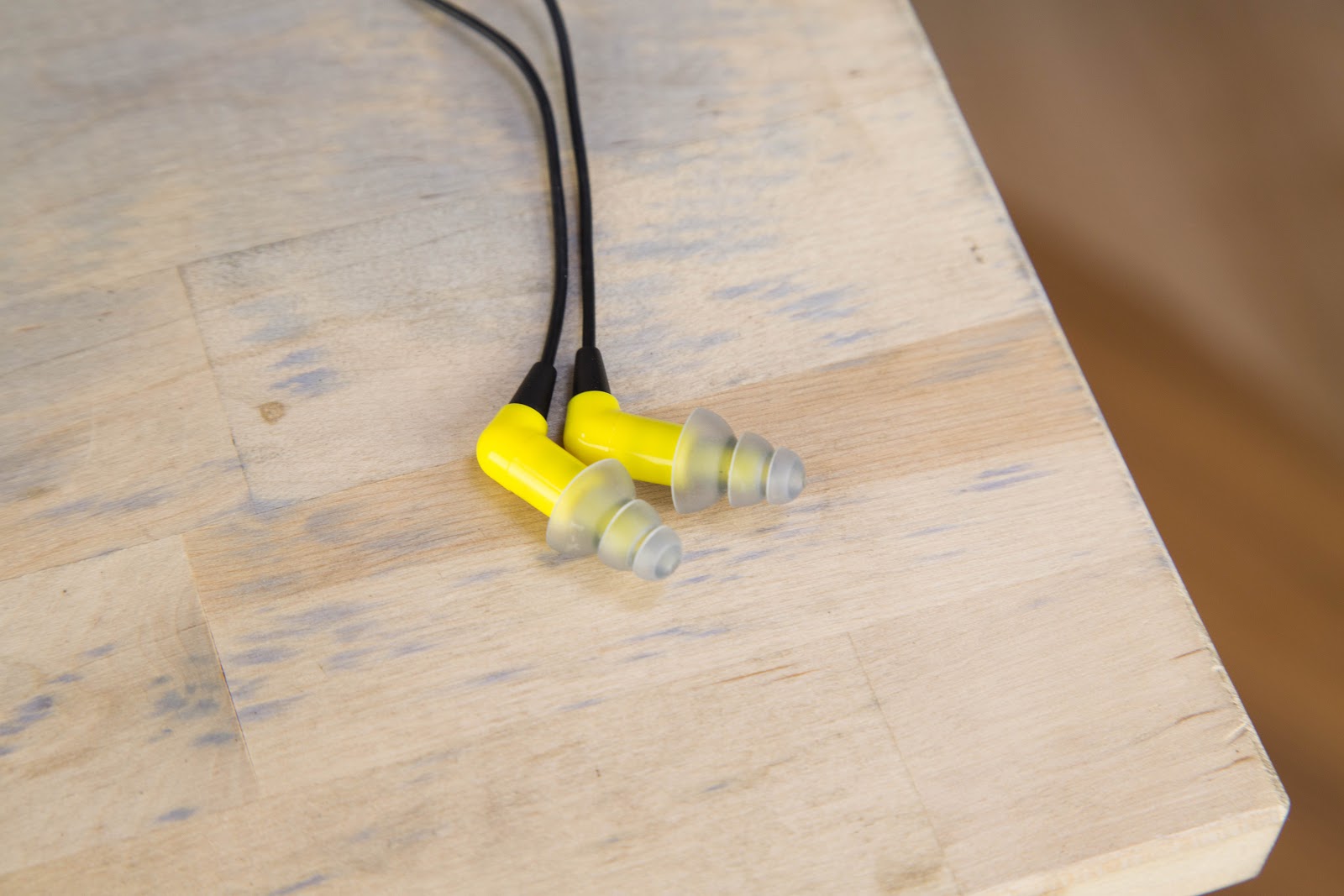
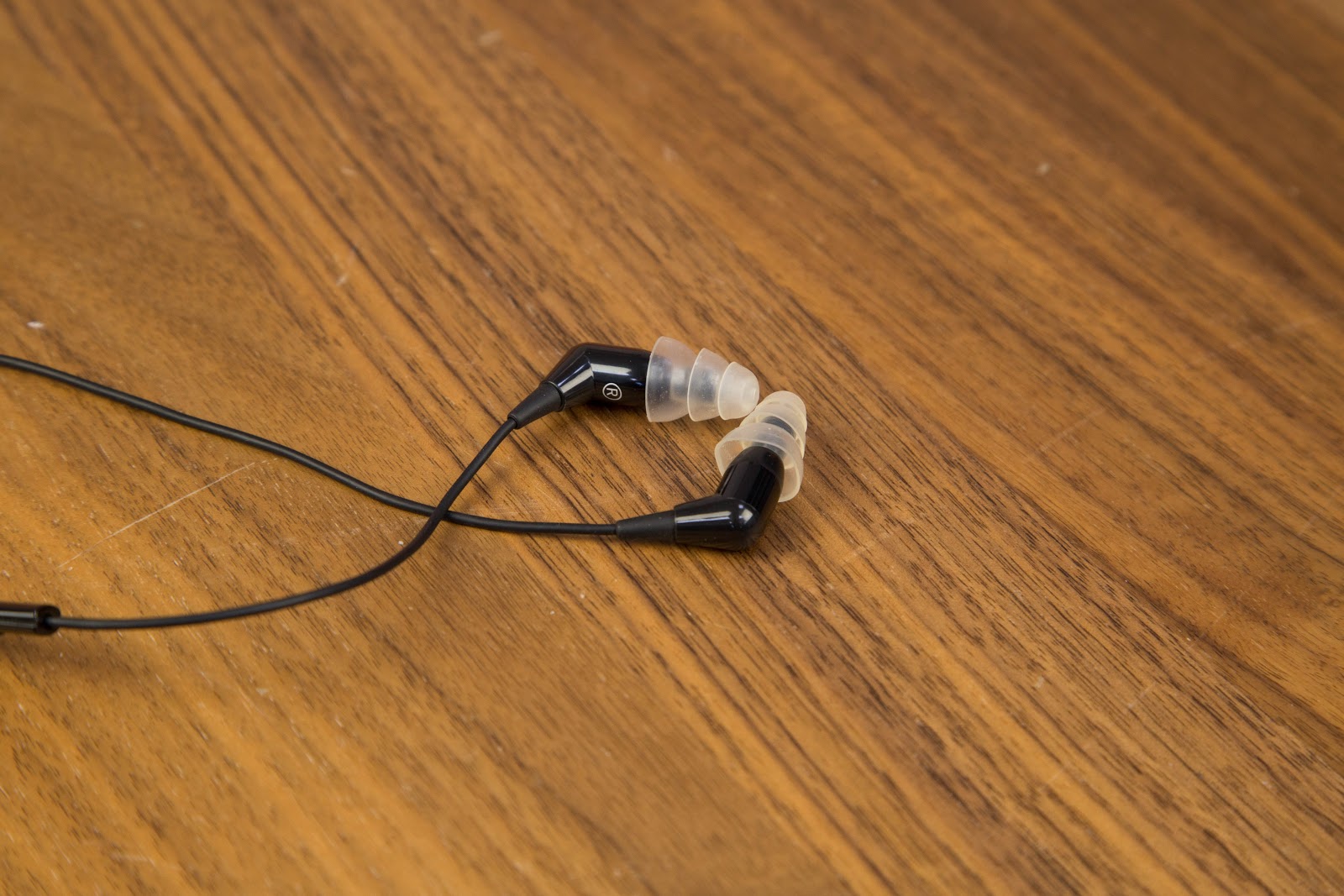
The case of the MC3 looks more like a barrel, as these headphones use an 8 mm dynamic emitter and a sophisticated acoustic camera to minimize distortion and sound artifacts. Despite this, the model looks small compared to many other in-ear headphones. HD5 are made in yellow color (again a hint of use by children), the case of these headphones is slightly smaller and stretched, because a smaller dynamic emitter is used. Compared to the MC3, they look a bit toyish, which, however, does not affect the sound characteristics.
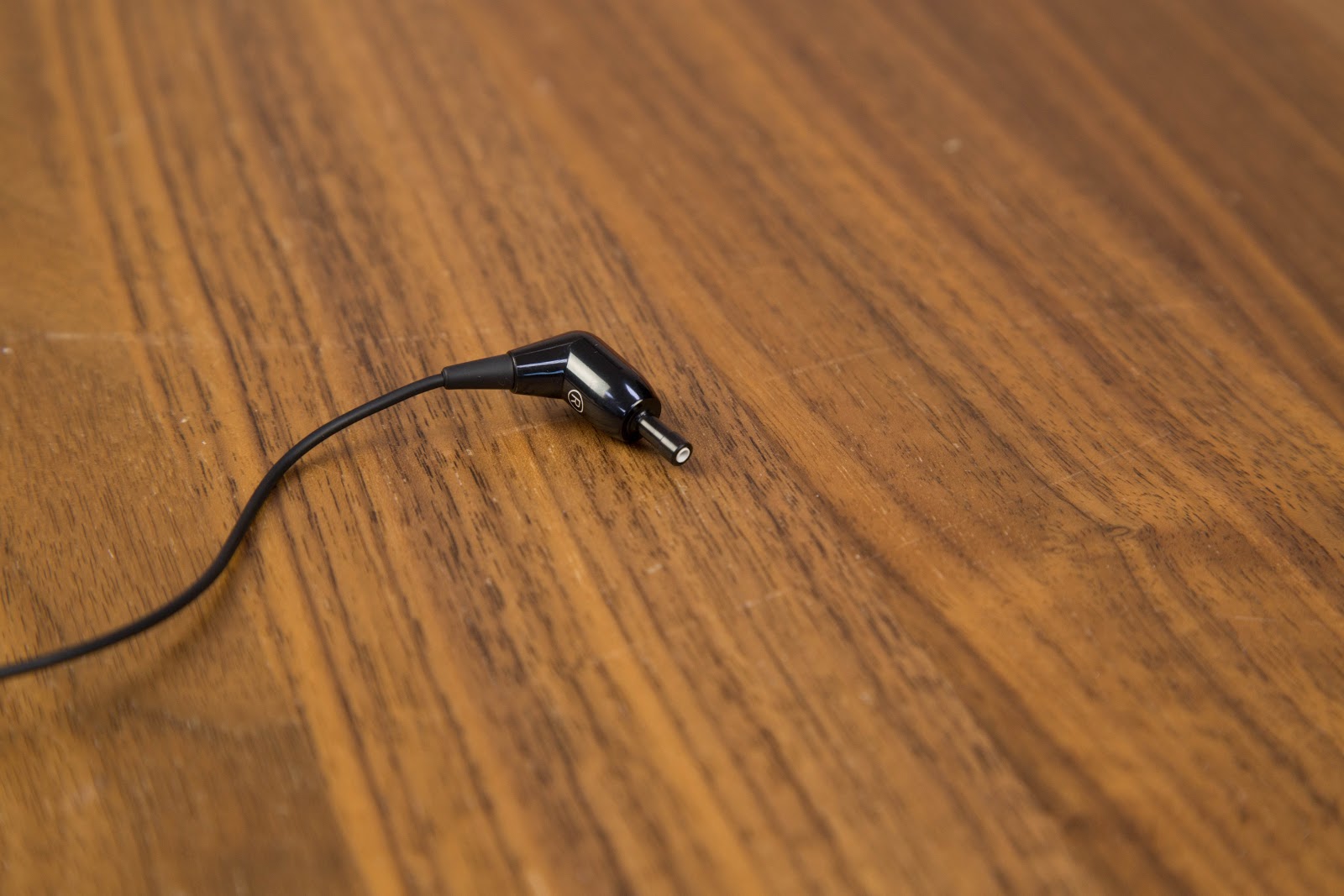
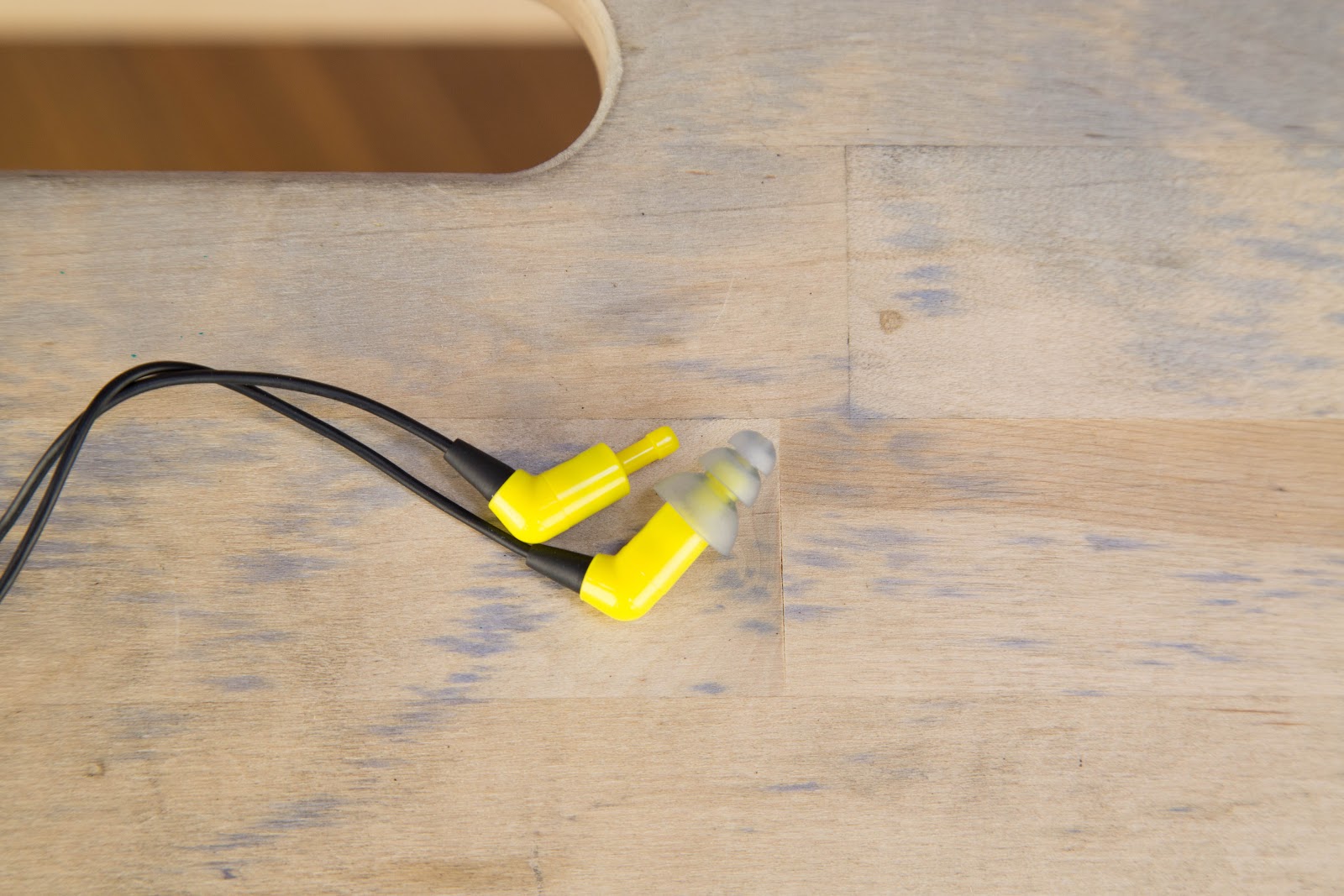
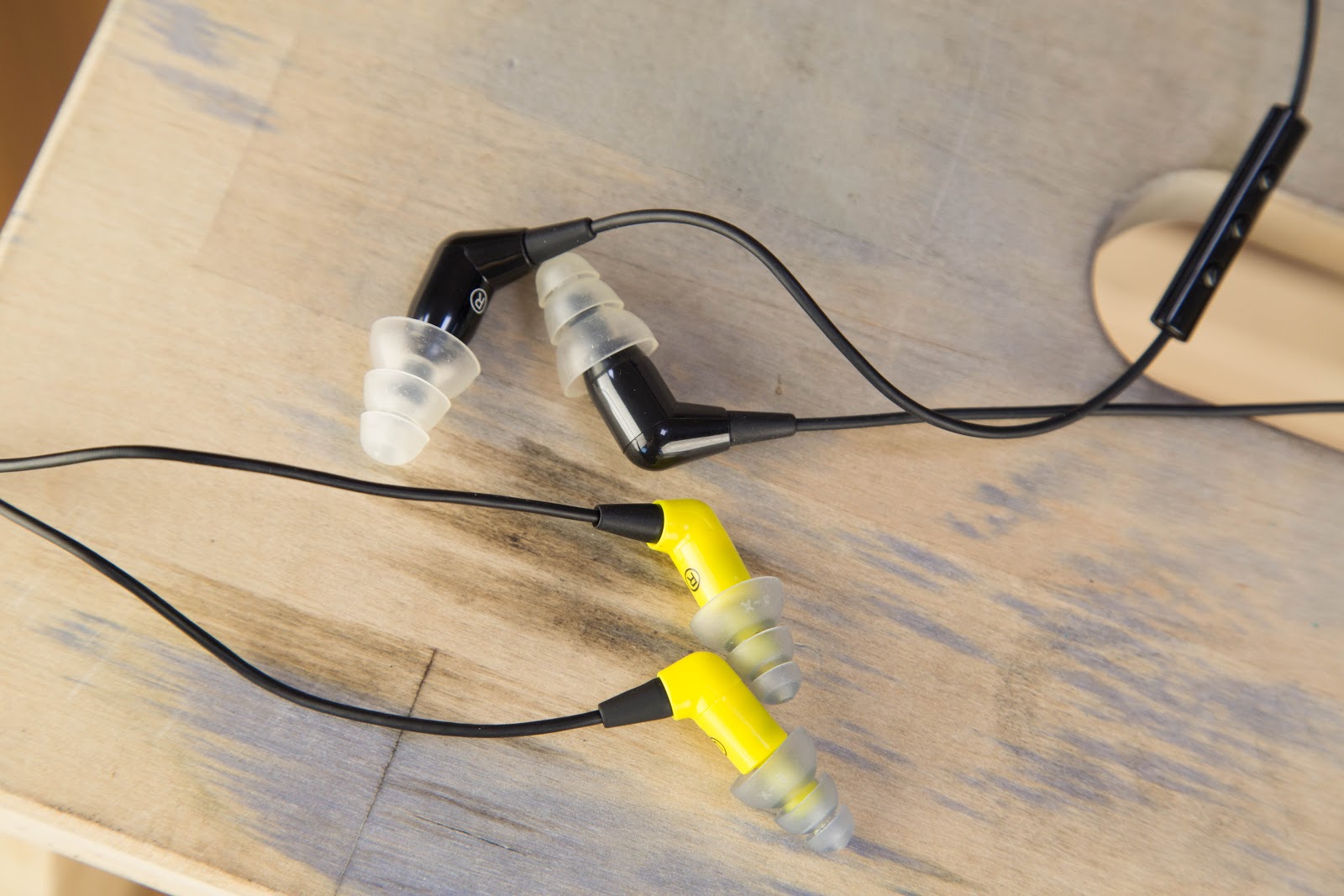
The cable in both cases is not removable. Slightly thinish, but in the area of the plug there is a special thickening for increased wear resistance. When the street was below 20 degrees below zero, it did not harden, but the HD5 microphone effect was sometimes observed until the cable was attached to clothes with a clip.
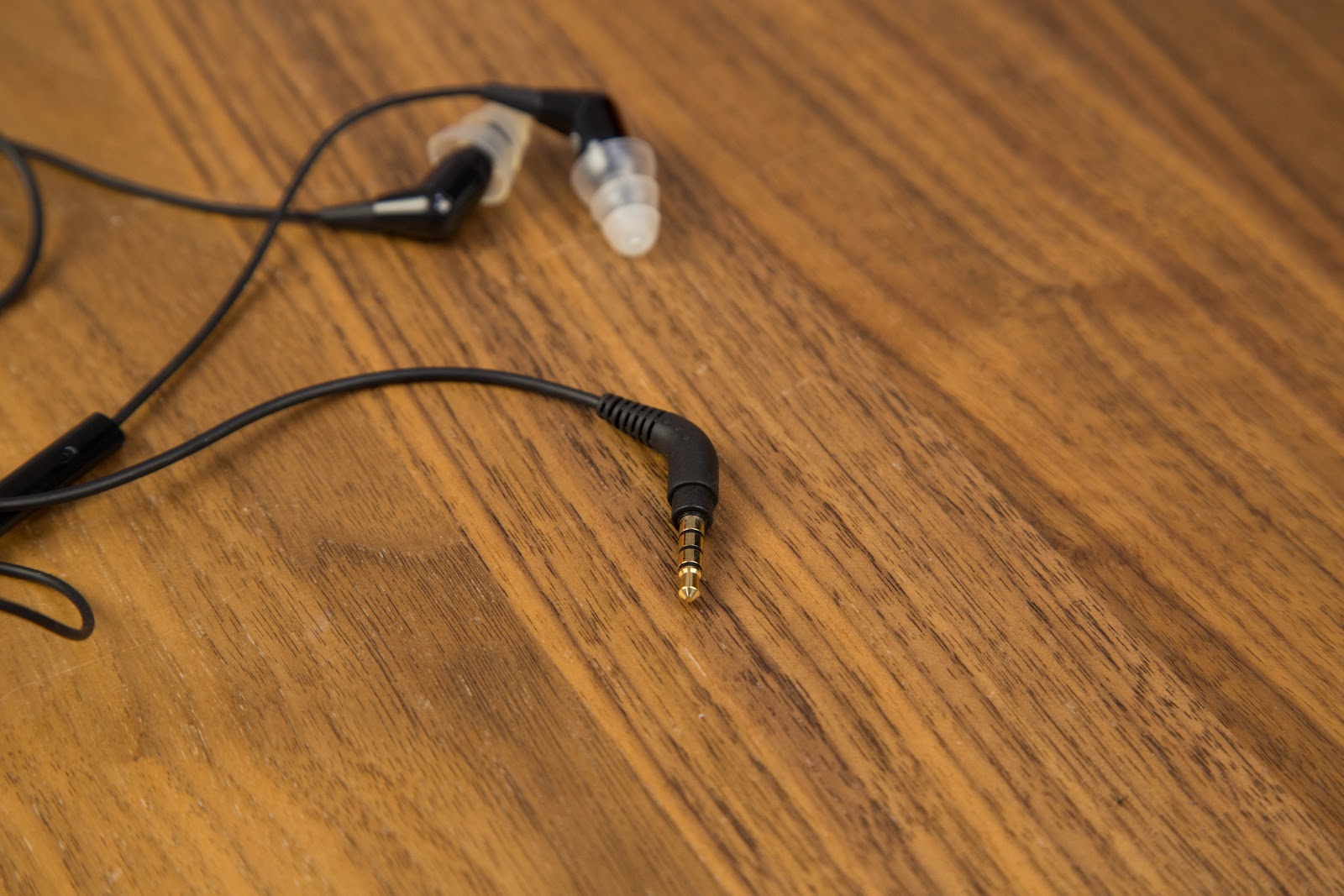

Continuing the conversation about the cable, it is impossible not to note the presence of the MC3 playback control panel: it is equipped with three buttons (two extreme for volume control, the central one is responsible for pause / playback), as well as a microphone for using headphones as a headset. The microphone does its job on a solid top five, but it takes some time to learn how to use the buttons blindly - they are too close to each other. By the way, the remote is ideally compatible with Apple technology, so you can control music by connecting the MC3 to an iPhone, without any problems.


If you have ever tried Etymotic headphones, then you know that with the fit of the headphone from this manufacturer, not everything is simple. MC3 with its “Christmas trees” are also designed for deep planting in the ears. In order not to experience discomfort during the initial wearing, the headphones should be carefully “screwed” into the ear canal, before that you have to choose the right fit. Previously, many complained about the shortcomings of this design, but in Etymotic a year ago everything was fixed, and now there are no problems with socks. Especially if you place the headphones in the ear canal correctly, you will get a sound insulation that you never dreamed of: the noise of the street, the subway, the plane, the neighbors with a perforator - all this disappears somewhere when the headphones are worn according to all canons.

Those who still can not cope with the three-flange ear cushions, the manufacturer decided not to torment and carefully put in a set of foam nozzles. By the sound they do not lose at all, but they rush much more comfortable.
In HD5, the landing is not so deep, so putting them on for the first time is much nicer. They do not need to be screwed in carefully: just put them in a comfortable position and turn on the music, you don’t have to pervert with the ear canal.
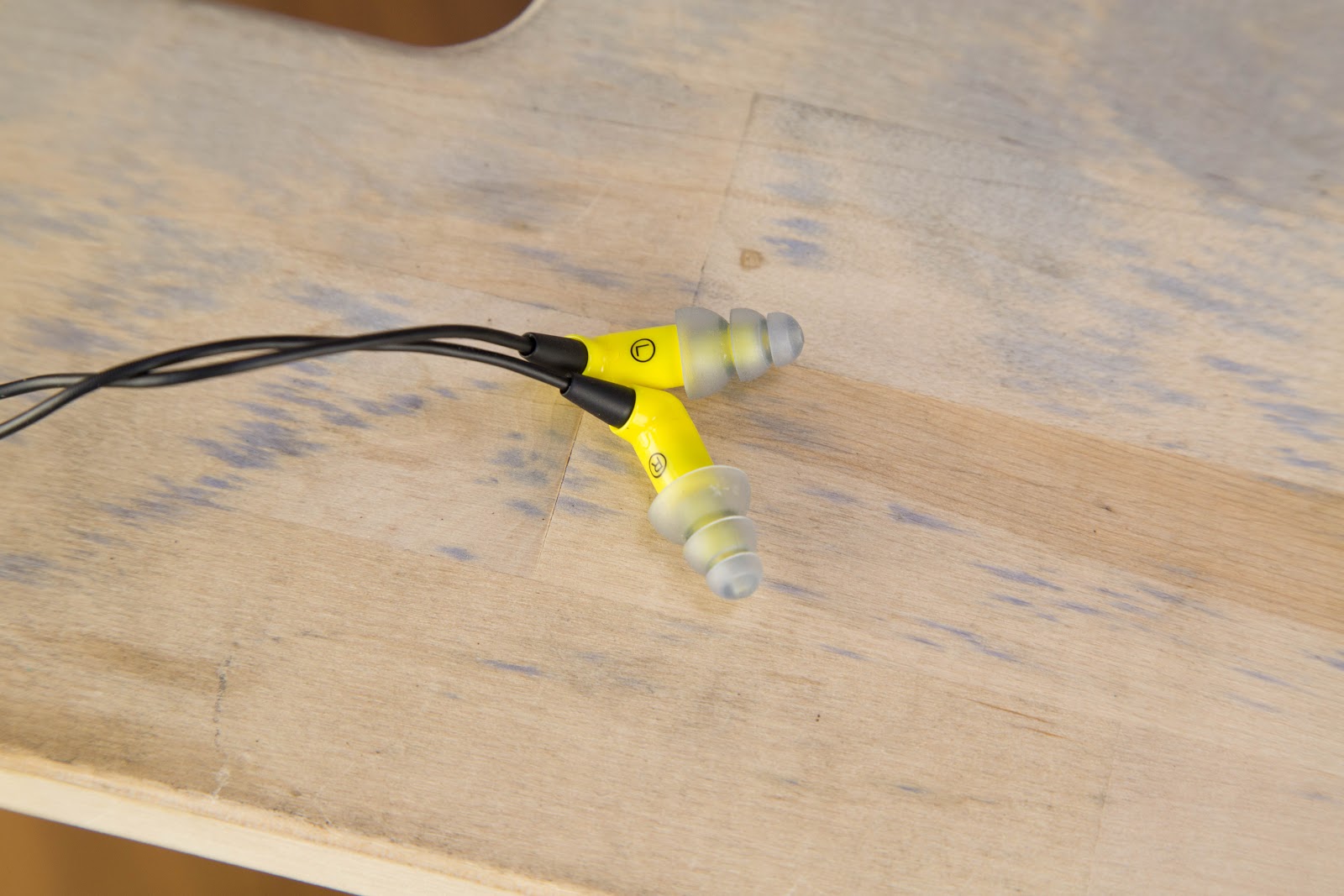
The main feature of this model is high impedance, working in symbiosis with excellent sound insulation. The 300 Ohm slightly muffles the sound, be it a smartphone or a portable audio player, but all this is compensated for by the ear cushions that hide the sound from the outside as if behind a stone wall. The only thing - on the street with the HD5 is to be careful, because the noise isolation is even too strong, if you use the "foam" from the kit.
For the purity of the experiment in both cases, we decided to evaluate the sound with Cowon Plenue D and iPhone 7 Plus.
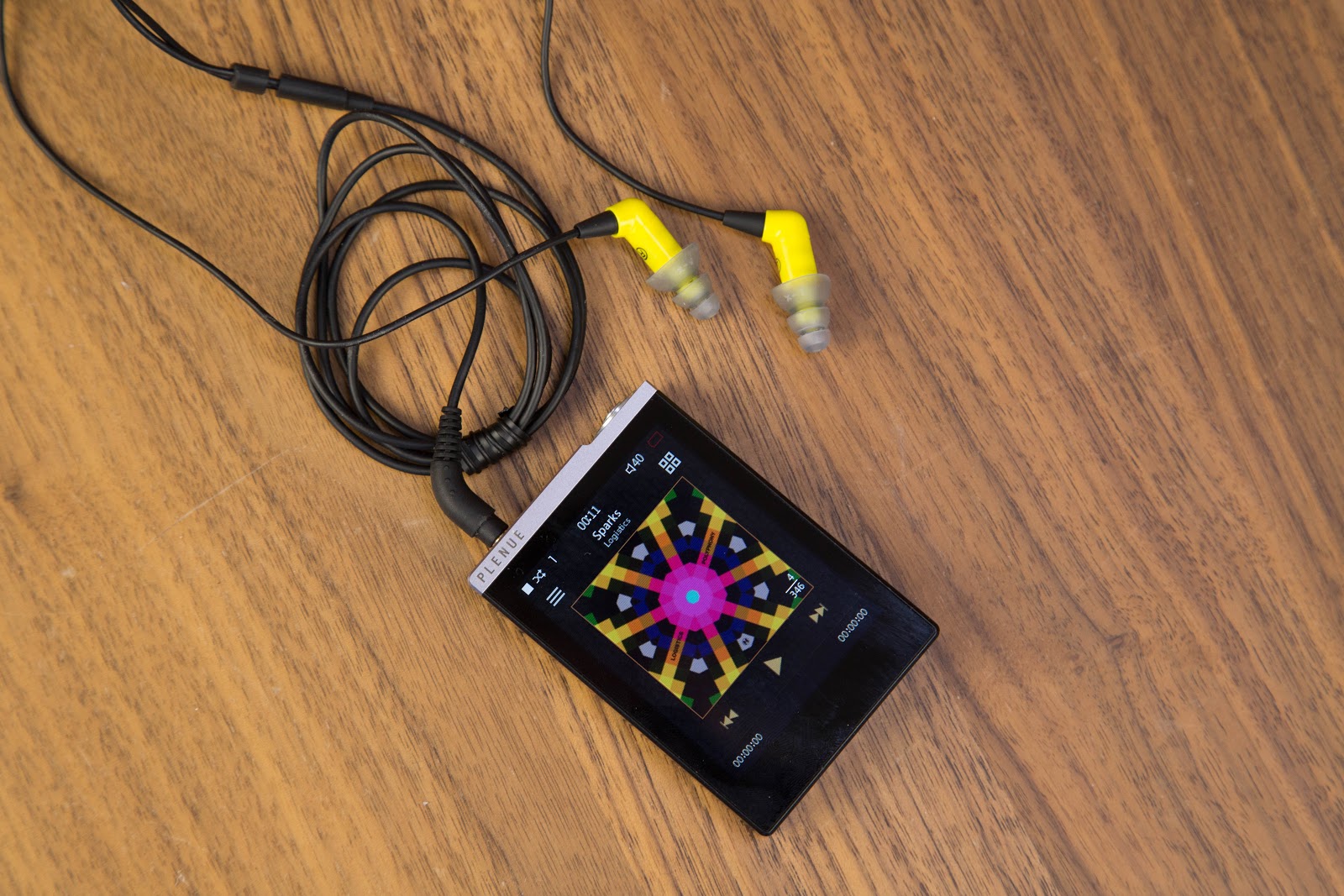
Subjectively, both pairs of headphones have sufficient versatility to be able to “shake” the smartphone, but if you want the most interesting impressions, the best thing is, of course, to use a player like the Plenue D. The same MC3, for example, on the street, you can listen with an iPhone (it’s not for nothing that they put a special cable), and at home indulge in sound pleasure with technology more seriously. HD5s are perceived as quieter than the MC3 (for obvious reasons), dampen the bass a bit, due to which the sound seems less natural.
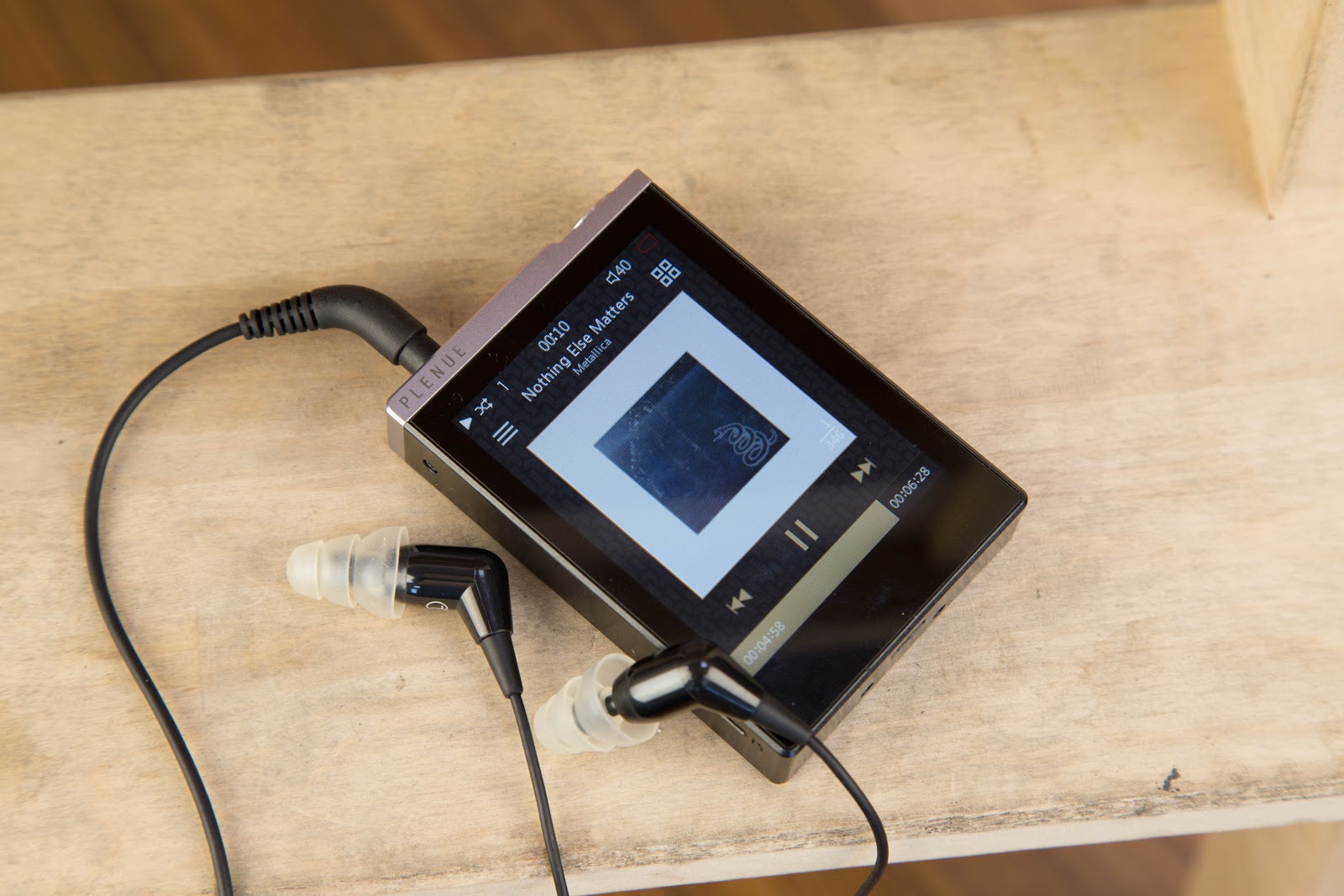
When listening in both cases, it is very important to choose the right attachments for yourself and adjust the optimum fit. If you do not do this, you may encounter either a bass leak or an excessive perseverance of high frequencies. “Christmas trees” give out the highest quality sound, it is not for nothing that they are so fond of Etymotic, but with MC3 you need to remember about the even position of the sound guide in the ear canal. With HD5, there are no such problems, and with the foam nozzles, the “children's” model was much more popular.
For a long time, Etymotic shows off fine tuning of headphones to the sensitivity of the human ear throughout the entire audible frequency range. Work on the sound leads to the fact that the frequency response is as smooth as possible, strong peaks and falls are not observed. On the example of MC3 you can see this.
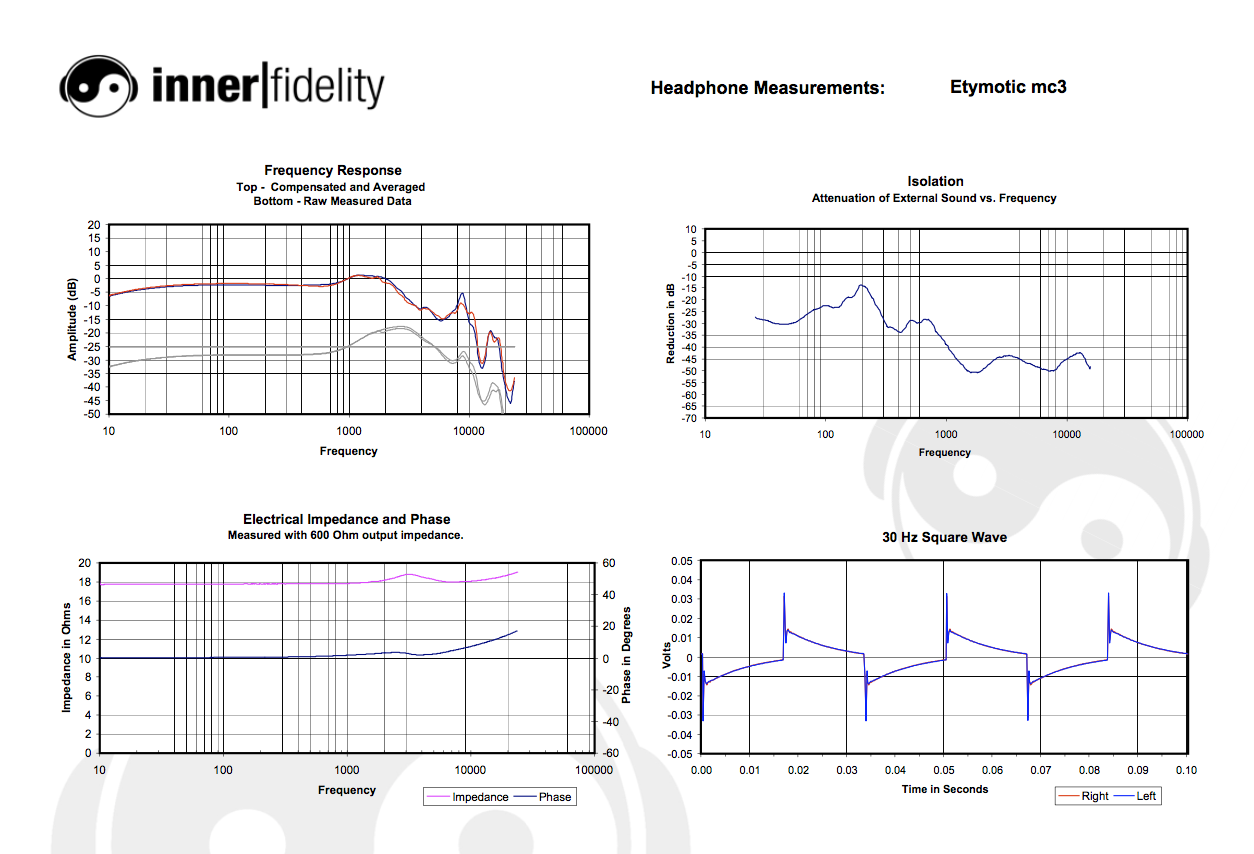
Etymotic MC3 is delighted with deep bass and pronounced vocals, so jazz and soul work out for these headphones especially well, like hip-hop. Of course, the difference between listening to lossless songs on the player and using the same Apple Music on iPhone is enormous, but unlike many other models of the manufacturer, this one does not have such a strong sensitivity to the sound source.
After the MC3, it took several hours to get used to the sound of the HD5 - yet these are no longer audiophiles, but safety-quality headphones. But then you get real pleasure from listening to the compositions of the violinist Lindsey Stirling and the System of a Down tracks, after which you don’t want to call these headphones “children’s” at all. Headphones sound as neutral as possible, there are no obvious peaks and dips throughout the frequency response. In some tracks, there is a lack of bass, but here we must not forget about the specifics of HD5, which are created just to protect the user's ear. An overabundance of bass contradicts this approach.
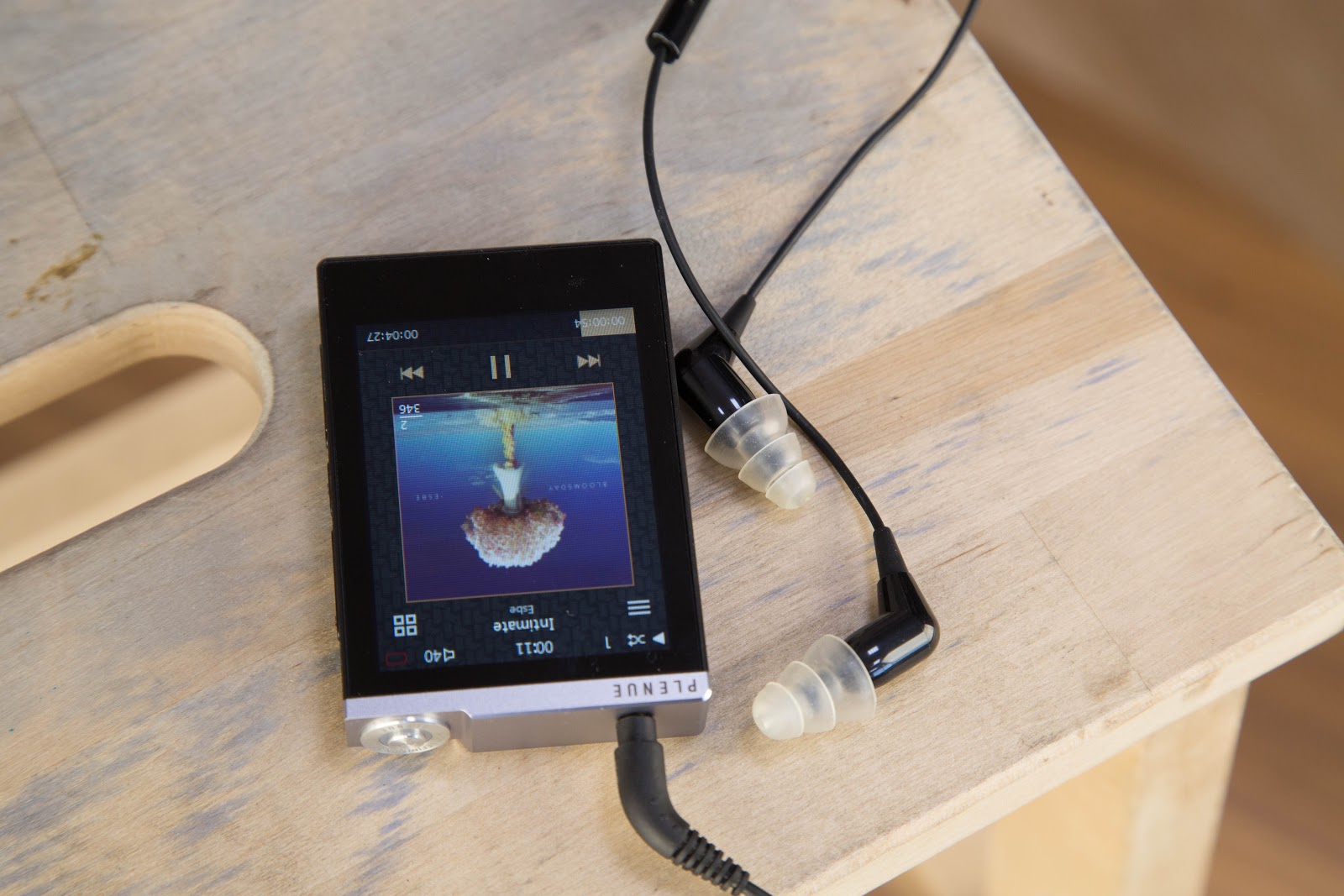
Therefore, instrumental music, jazz, blues and country rock perfectly fit in to these headphones. For heavier genres, it is better to pay attention to the MC3, but do not forget that everything is subjective, and someone can take a little “vagueness” as a kind of zest.
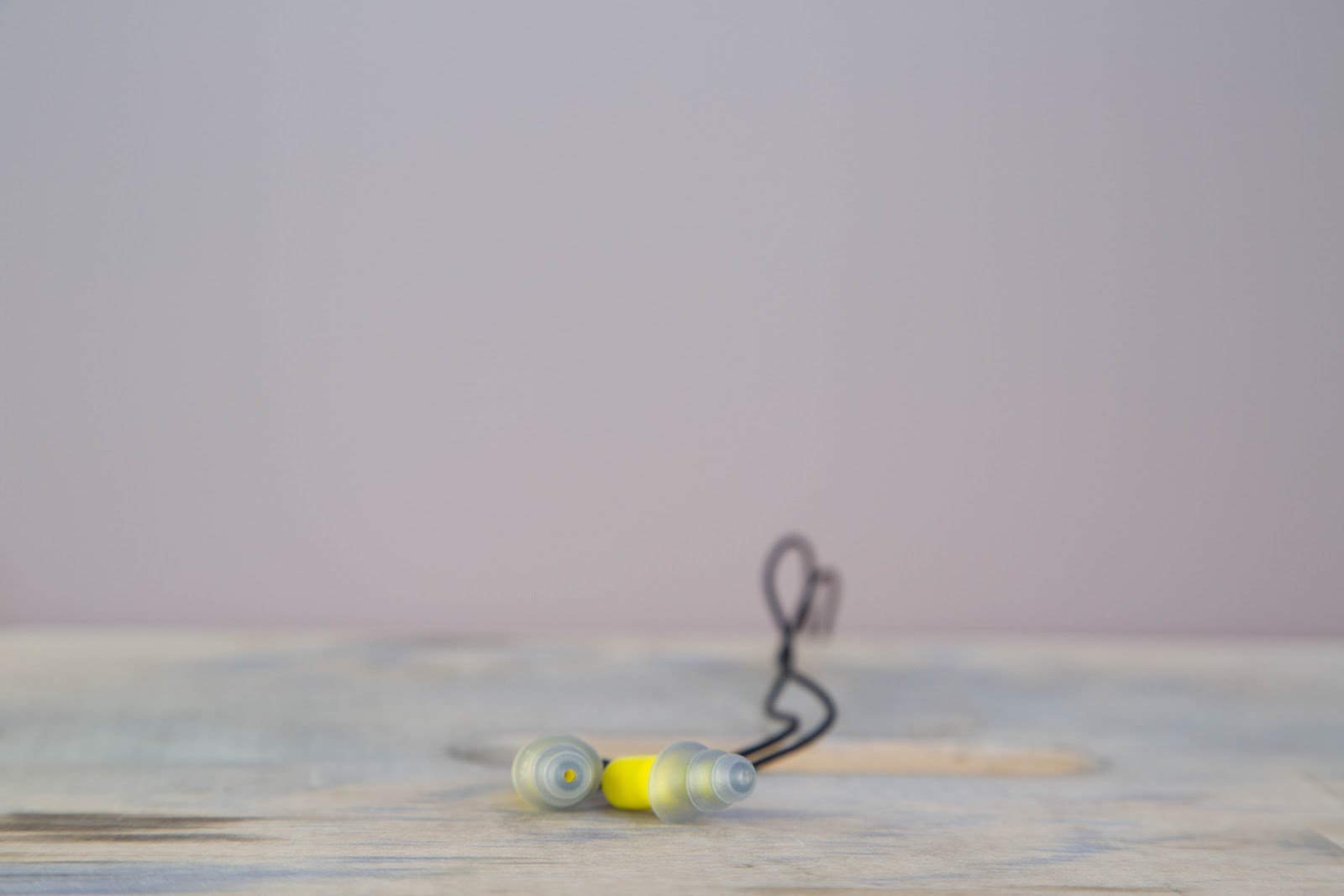
First of all, it is worth noting that the MC3 and HD5 are not competitors, they are just two interesting dynamic models of a well-known manufacturer, which we decided to talk about. Therefore, it is necessary to rely entirely on personal preferences, choosing what is more important for you - natural sound or slightly “colored” by security (but it's nice when your health is taken care of, isn't it?). The MC3 is much more cheerful and easy to build, while the high resistance of the HD5 makes them slightly "tough" if you use these headphones with smartphones. In general, both models have their advantages and different target audiences, while at the same time the price is not too different - about 5 thousand rubles for HD5 versus 6 thousand rubles for MC3.

The manufacturer quickly realized that the public "wants more", and soon expanded the range of their headphones: ER4RB, ER4PT (modification ER4 for traveling) appeared, as well as ER4P with ER4S. The last two models have not just brought Etymotic popularity among regular users: ER4S are still considered to be one of the best in-ear rebar headphones in history. The feature of these headphones in almost linear frequency response, which the manufacturer was able to achieve with a single reinforcement radiator. Needless to say that sound lovers quickly turned the name Etymotic into a common noun. And if anatomically, the listener was ideally compatible with ER4S (the headphones were maximally revealed during the direct auditory canal), the familiar tracks never sounded any different to him.
Of course, in all this there is an exaggeration, and the fever around ER4 cannot be compared with gold, but few people have so far managed to repeat the success of the American manufacturer. Not so long ago, he released the reincarnation of his legendary model in the form of modifications NEW ER4 : ER4XR (Extended Response) and ER4SR (Studio Reference), which we described in great detail in the blog , both versions equipped with a reinforcing radiator with a balanced anchor and even have identical characteristics However, the sound is completely different. It may seem that Etymotic has found itself only in the “fixtures”, but this is not at all the case: the MC3 and HD5 headphones , which will be discussed today, clearly demonstrate this.
')
Etymotic MC3 and HD5 Features
| HD5 | MC3 | |
| Driver type | Dynamic, 6 mm | Dynamic, 8 mm |
| Headphone Type | Closed, inter channel | Closed, inter channel |
| Frequency range | 20 - 15000 Hz | 20 - 15000 Hz |
| Impedance | 300 ohm | 16 ohm |
| Sensitivity | 76 dB | 100 dB |
| Cable | Fixed, 1.2 m | Fixed, 1.2 m (with remote control) |
| Ear cushions | Silicone | Silicone |
Contents of delivery
The MC3 is made in a slightly aggressive Etymotic style. On the front side of the white cardboard box, the headphones themselves are shown, and the necessary technical information is placed on the back. Opening the top cover, through the small window you can already look at the headphones.


Boxing with HD5 looks like that of the MC3 : the same placement logic, hinged lid ... but under it there is no usual window showing the appearance of the headphones. Instead, reference information was placed on the spread, from which it follows that with three-flange ear cushions the noise absorption is 22 dB, and with foamy - 27 dB. According to the “passport”, the headphones “eat up” from 36-42 dB of superfluous noise without any active noise cancellation there. It is not for nothing that the HD5 manufacturer attributed to the Safety series: with such sound insulation, the risk of hearing damage while listening is minimal, since the headphones block external sounds in such a way that there is no need to increase the volume.


In the plastic case we find headphones and additional accessories. In MC3, a carrying case, a set of interchangeable ear cushions (three-flange and foam in two sizes), a plastic clip and, most importantly, two pairs of interchangeable acoustic filters with a tool for replacing them were put in the kit.

The HD5 package is similar to the MC3 with the exception of replaceable acoustic filters, but they put an extra pair of foam nozzles for improved noise insulation.

Already, by picking the headphones, it becomes clear what target audience they are intended for: if the MC3 has a pronounced “audiophile” directivity, then the HD5 focuses mainly on safety (300 ohms after all!), Without which children cannot do.
Design
At first glance, both models are similar: in shape, the headphones resemble a small tube with ear pads - “Christmas trees” at the end, which were so loved by Etymotic. Nevertheless, there are plenty of differences: for example, in the case of the HD5, plastic is used as the case material, while in MC3 it is made of metal.


The case of the MC3 looks more like a barrel, as these headphones use an 8 mm dynamic emitter and a sophisticated acoustic camera to minimize distortion and sound artifacts. Despite this, the model looks small compared to many other in-ear headphones. HD5 are made in yellow color (again a hint of use by children), the case of these headphones is slightly smaller and stretched, because a smaller dynamic emitter is used. Compared to the MC3, they look a bit toyish, which, however, does not affect the sound characteristics.



The cable in both cases is not removable. Slightly thinish, but in the area of the plug there is a special thickening for increased wear resistance. When the street was below 20 degrees below zero, it did not harden, but the HD5 microphone effect was sometimes observed until the cable was attached to clothes with a clip.


Continuing the conversation about the cable, it is impossible not to note the presence of the MC3 playback control panel: it is equipped with three buttons (two extreme for volume control, the central one is responsible for pause / playback), as well as a microphone for using headphones as a headset. The microphone does its job on a solid top five, but it takes some time to learn how to use the buttons blindly - they are too close to each other. By the way, the remote is ideally compatible with Apple technology, so you can control music by connecting the MC3 to an iPhone, without any problems.

Landing

If you have ever tried Etymotic headphones, then you know that with the fit of the headphone from this manufacturer, not everything is simple. MC3 with its “Christmas trees” are also designed for deep planting in the ears. In order not to experience discomfort during the initial wearing, the headphones should be carefully “screwed” into the ear canal, before that you have to choose the right fit. Previously, many complained about the shortcomings of this design, but in Etymotic a year ago everything was fixed, and now there are no problems with socks. Especially if you place the headphones in the ear canal correctly, you will get a sound insulation that you never dreamed of: the noise of the street, the subway, the plane, the neighbors with a perforator - all this disappears somewhere when the headphones are worn according to all canons.

Those who still can not cope with the three-flange ear cushions, the manufacturer decided not to torment and carefully put in a set of foam nozzles. By the sound they do not lose at all, but they rush much more comfortable.
In HD5, the landing is not so deep, so putting them on for the first time is much nicer. They do not need to be screwed in carefully: just put them in a comfortable position and turn on the music, you don’t have to pervert with the ear canal.

The main feature of this model is high impedance, working in symbiosis with excellent sound insulation. The 300 Ohm slightly muffles the sound, be it a smartphone or a portable audio player, but all this is compensated for by the ear cushions that hide the sound from the outside as if behind a stone wall. The only thing - on the street with the HD5 is to be careful, because the noise isolation is even too strong, if you use the "foam" from the kit.
Sound
For the purity of the experiment in both cases, we decided to evaluate the sound with Cowon Plenue D and iPhone 7 Plus.

Subjectively, both pairs of headphones have sufficient versatility to be able to “shake” the smartphone, but if you want the most interesting impressions, the best thing is, of course, to use a player like the Plenue D. The same MC3, for example, on the street, you can listen with an iPhone (it’s not for nothing that they put a special cable), and at home indulge in sound pleasure with technology more seriously. HD5s are perceived as quieter than the MC3 (for obvious reasons), dampen the bass a bit, due to which the sound seems less natural.

When listening in both cases, it is very important to choose the right attachments for yourself and adjust the optimum fit. If you do not do this, you may encounter either a bass leak or an excessive perseverance of high frequencies. “Christmas trees” give out the highest quality sound, it is not for nothing that they are so fond of Etymotic, but with MC3 you need to remember about the even position of the sound guide in the ear canal. With HD5, there are no such problems, and with the foam nozzles, the “children's” model was much more popular.
For a long time, Etymotic shows off fine tuning of headphones to the sensitivity of the human ear throughout the entire audible frequency range. Work on the sound leads to the fact that the frequency response is as smooth as possible, strong peaks and falls are not observed. On the example of MC3 you can see this.

Etymotic MC3 is delighted with deep bass and pronounced vocals, so jazz and soul work out for these headphones especially well, like hip-hop. Of course, the difference between listening to lossless songs on the player and using the same Apple Music on iPhone is enormous, but unlike many other models of the manufacturer, this one does not have such a strong sensitivity to the sound source.
After the MC3, it took several hours to get used to the sound of the HD5 - yet these are no longer audiophiles, but safety-quality headphones. But then you get real pleasure from listening to the compositions of the violinist Lindsey Stirling and the System of a Down tracks, after which you don’t want to call these headphones “children’s” at all. Headphones sound as neutral as possible, there are no obvious peaks and dips throughout the frequency response. In some tracks, there is a lack of bass, but here we must not forget about the specifics of HD5, which are created just to protect the user's ear. An overabundance of bass contradicts this approach.

Therefore, instrumental music, jazz, blues and country rock perfectly fit in to these headphones. For heavier genres, it is better to pay attention to the MC3, but do not forget that everything is subjective, and someone can take a little “vagueness” as a kind of zest.
Safety or agility?

First of all, it is worth noting that the MC3 and HD5 are not competitors, they are just two interesting dynamic models of a well-known manufacturer, which we decided to talk about. Therefore, it is necessary to rely entirely on personal preferences, choosing what is more important for you - natural sound or slightly “colored” by security (but it's nice when your health is taken care of, isn't it?). The MC3 is much more cheerful and easy to build, while the high resistance of the HD5 makes them slightly "tough" if you use these headphones with smartphones. In general, both models have their advantages and different target audiences, while at the same time the price is not too different - about 5 thousand rubles for HD5 versus 6 thousand rubles for MC3.
Source: https://habr.com/ru/post/374211/
All Articles